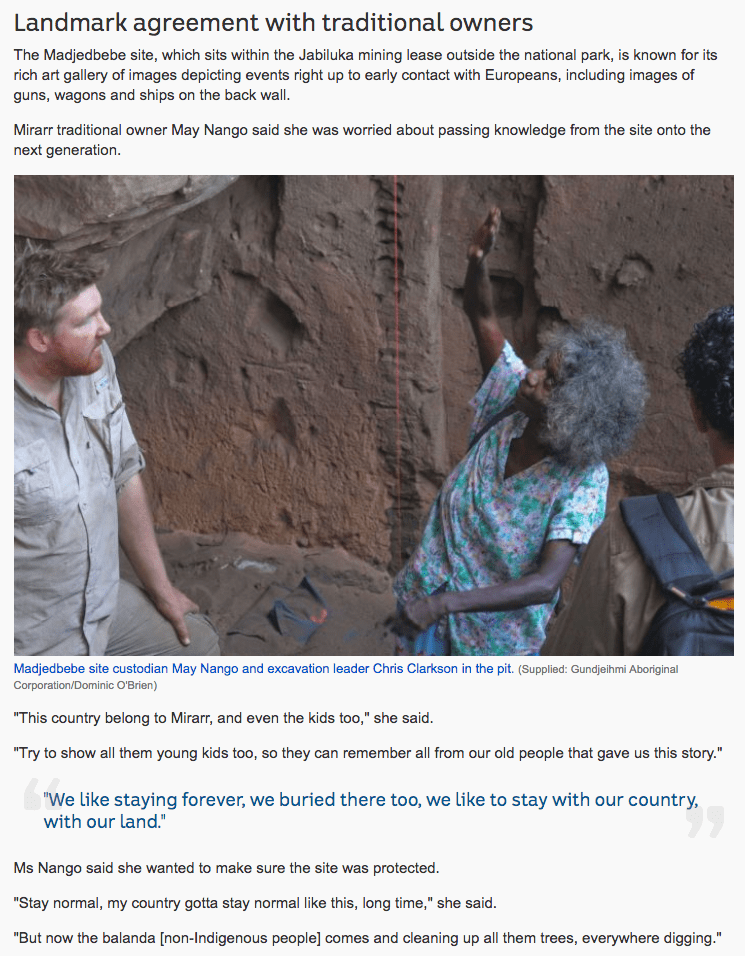Hi everyone!
In today's article, I want to look at an example of Aboriginal English in the media and how you can include this in an essay. Many students study Aboriginal English in Term 3, so knowing how to identify its features and talk about it in an essay is absolutely vital!
Firstly, it must be noted that I simply didn't look for Aboriginal English in the media. I merely came across it when reading an article online, and thought 'oh that's an example of Aboriginal English'. As an EL student, it's important that you do your own research and but oftentimes, the examples in the media will not be explicit; instead, they will be implicit.
Please read the article here: http://www.abc.net.au/news/science/2017-07-20/aboriginal-shelter-pushes-human-history-back-to-65,000-years/8719314
Beyond the fact that the information presented in this article is extraordinarily fascinating, what is more, relevant for EL is the excerpt spoken by Mirarr traditional owner May Nango (towards the middle of the article). I have included the excerpt below. It also must be noted before continuing that Aboriginal English isn't just restricted to one variety - there are various dialects within Aboriginal English.
A few things to note:
- The use of code-switching in 'Balanda'
- The use of ellipsis in the removal of the primary auxiliary verb (are) from 'to be'
- The use of possession marked by juxtaposition (country belong to Mirarr)
- The use of inverted syntax - "everywhere digging".
What else can you see in the above excerpt? The above list isn't complete!
So how do we include this in an essay? See an excerpt below of how I would include this along with a linguist example:
"In a recent media example, in response to the recent discoveries of Aboriginal artefacts, Madjebebe site custodian May Nango displayed many quintessential examples of Aboriginal English in her speech. For example, Nango demonstrates her indigenous heritage through code-switching in the phrase ‘now the balanda comes and cleaning up’, where ‘balanda’ is defined as ‘non-indigenous people’. According to Diana Eades, “Aboriginal English plays an important role in the maintenance and assertion of Aboriginal identity”, and through features such as code-switching, Nango is able to actively reflect her indigenous heritage."
Enjoy! 🙂
About Learnmate
Learnmate is a trusted Australian community platform that connects students who want 1:1 or small group study support, with tutors who are looking to share their knowledge and earn an income. From primary school to high school subjects — from science and maths to niche subjects like visual communication — Learnmate can help you improve academic performance or boost confidence, at your pace with the tutor that you choose.
We pride ourselves in offering a reliable and positive experience for both our students and tutors. Every tutor that joins the platform is vetted to meet a level of academic excellence, teaching qualification or relevant experience. All tutors are provided the opportunity to complete professional training.
Students and parents can easily find and screen for tutors based on their location, their subject results or skill level, and whether they provide in-person or online sessions. Learnmate is proud to provide tutors in Melbourne, Sydney, Geelong, Brisbane, Hobart, Canberra, Perth & Adelaide, and other locations.




